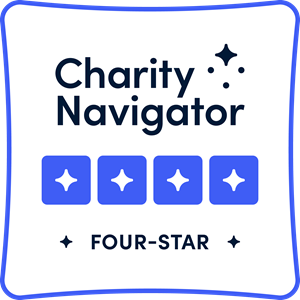Tales from the Sukkah
Supporting the Jewish Chaplaincy at Stanford Medicine
The Jewish Chaplaincy at Stanford Medicine, established in 2000, has been an important source of spiritual comfort and guidance for thousands of patients, families, staff, and students at Stanford Health Care, Lucile Packard Children's Hospital, and Stanford University School of Medicine.
Our Federation has been supporting the Jewish Chaplaincy through the Newhouse Fund since 2003. Since its establishment, the Chaplaincy has served Jews in health crises, providing hope and healing through connection with Jewish community and tradition. Of the 1,200 Jewish adults and children hospitalized there yearly, three-quarters are unaffiliated. Thousands of others are treated in outpatient settings. Patients represent all age ranges and include many immigrants and Holocaust survivors.
The Jewish Chaplaincy also runs holiday and Shabbat programs, including bringing in 5th graders from Hausner and Wornick day schools to celebrate holidays with patients. One such holiday program in 2016 was during the celebration of Sukkot, when the Chaplaincy set up a sukkah in the hospital. Linda Allen, program coordinator for the Chaplaincy, shared with us some of her recent “Tales from the Sukkah”:
Tales from the Sukkah
A Jewish woman was on her way to chemotherapy. She was unable to attend High Holiday services because of her treatment, so visiting the Sukkah and waving the lulav became her high-holiday experience. She was so grateful for the opportunity to come into the sukkah and observe the mitzvah.
A man came by, doing laps while his wife was in treatment for pancreatic cancer. They had been married for 62 years. She is a retired teacher. He had heart issues a few years ago. She no longer qualified for experimental treatment. He wished for a good day.
A Jewish woman came into the sukkah at 11:30 am and stayed until after 1:00 pm to perform the mitzvah of waving the lulav and eating a meal in the sukkah. She commented that, when her wife had been in the hospital a few years ago, it had been a difficult time and the chaplain had made a comment which kept them together. She sent a photo of Bruce [D. Feldstein, MD, the Chaplaincy’s founder and director] to her partner to check that he was the one. She shared the many health struggles which they have dealt with – all with tremendous optimism even while sharing current challenges.
A fundamentalist Christian woman came by with her partner. She knew what a sukkah was, but had never been in one. She was totally overwhelmed by the experience. Here for cancer treatments, she took one of each of the blessing cards and a dozen strips to write prayers on. She was so positive and so distressed. When asked what we could wish for her, she could hardly talk. Crying, she whispered “health” in Linda’s ear.
A Jewish man came by to see what we had. He didn’t want to stay long enough to wave the lulav, but came in, checked out our materials, sat, ate a date, and left.
A woman, not Jewish, came by with her young son. She stayed to find out about the sukkah as a distraction before his chemotherapy. They stayed to add wishes for his health to our prayer chains.
A physician came by to find out if he could bring his lunch and eat. He’ll be back.
A man stopped by – he had come in for emergency room treatment, had treatment at the Cancer Center, and couldn’t find his way back to the ER where his car had been left with valet parking. We talked about getting lost. We sent him on his way with a snack and wishes that he would find his way back without further difficulty.
A staff woman stopped by to see if we had materials about Sukkot for her 8 year old daughter. They had recently moved here from New York and left their Jewish friends and family there.
A woman came by with her daughter, who was somewhere between 12 and 20 – hard to say. The daughter had an appointment related to epilepsy. She had been treated at Packard from 1994 to 1996 for a rare cancer – she is currently the only survivor. They were taking a walk to see how the campus had changed. The mother took the card for Ruach for her daughter, explaining that her SPIRIT is what has kept her alive. She wishes for a cure for epilepsy.
A volunteer, not Jewish, who visits the sukkah every year stopped by. We talked about the symbolism of the sukkah and he asked about the lulav and etrog, deciding to experience waving them. Afterward, he commented that he was leaving with his mind cleared and appreciating that we do this every year and that it is a welcoming space for everyone.

For more information on the Jewish Chaplaincy at Stanford Medicine, visit their website or contact Linda Allen.

